ING, Verizon, Mars and Siemens on transforming business

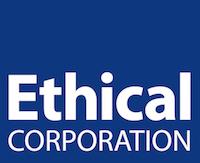
Being able to prove how transformative strategies contribute to the long-term goals of the business is crucial. To meet the UN Global Goals and the 2 Degree target requires a wholesale change in practice, across both the business and industry. Something companies can’t do on their own, business needs to develop long-term partnerships that deliver the change required.
To help you deliver business transformation, Ethical Corporation has interviewed industries leaders from across the globe to share their experiences and insight in our newly produced intelligence pack. Hear from:
- American Institute of Artificial Intelligence, Al Naqvi, President
- ING, Leon Wijnands, Global Chief Sustainability Officer
- Mars, Barry Parkin, Chief Procurement and Sustainability Officer
- Verizon, Jim Gowen, Vice President of Global Supply Chain and Chief Sustainability Officer
- General Motors, David Tulaukas, Director of Sustainability
- Siemens, Markus Strangmüller, Corporate Strategy - Sustainability - Business to Society
You can access the complimentary content pack here
In the 9 paged briefing and 1-hour webinar you will learn how innovative businesses are looking to drive the required changes both internally and externally:
- Where to start: Identify the areas and impacts of the business that need to change
- Understand how you can transform these outputs without jeopardizing the business
- Hear how to convince the leadership to go against decades of business thinking
- Identify the right partners to drive this change; internal departments, NGOs, academia, start-ups and competitors
- Discover how businesses are forecasting these future positive impacts on business, the industry, society and environment
You can access the complimentary content pack here
Contact:
Ed Long
Project Director
Ethical Corporation
+44 (0) 20 7375 7188
Beyond Meat Joins the Burger Bar at TGI Fridays


Vegan and vegetarian foods are almost a staple in major restaurants these days. That's a significant change from about 20 years ago, when dedicated non-meat eaters would be hard pressed to find anything beyond a dressed-up salad on the casual dining menu.
In fact, according to Statistica, 27 percent of Millennials who were surveyed in 2016 said having access to vegan food choices was important to them when it came to deciding where and what they wanted to eat. For Generation Xers, Baby Boomers and individuals older than 70 there was less emphasis on that priority (19, 13 and 12 percent, respectively), but having the option of "going vegan" has been a rising preference in recent years.
So it isn't a surprise that Beyond Meat, a true flagship of vegan cuisine, will soon be on the menu of a national restaurant chain. In September the brand's 6 oz burger was given a trial run at six TGI Fridays locations in the Boston, MA area. Beginning in 2018, TGI Fridays plans to introduce the veggie burger along side its "real" beef and turkey burgers. About 465 dining establishments under the TGI Fridays brands will feature the vegan look-alike.
And that's big news not just for dedicated vegans and vegetarians, but for gluten-free diners as well. While TGI Fridays is cautious to remind non-gluten diners that their restaurants aren't "a gluten-free environment" that can ensure against cross-contamination, the advent of a product that doesn't use wheat, soy or dairy is big news for a growing consumer base that does without the fillers that are often found in veggie burgers.
For TGI Fridays that move means more potential business. Like several mainstream restaurants, TGI Fridays has been experiencing declining sales over the past few years. The answer, says CEO John Antiocho, may be a solid remake of what eating at TGI Fridays is all about.
"When you look at the alternatives out there in the marketplace today and who's creating buzz and creating excitement, it's gone away from chain casual dining," Antiocho explained to Business Insider's writer Kate Taylor.
Restaurants like Applebees, Ruby Tuesdays and TGI Fridays are realizing that capturing the eye (or the taste bud) of today's consumer will take more than good home-cooked meals like Mom used to make and a comfy atmosphere. Diners want foods that align with their ethics and their eating habits (that includes their personal food restrictions) as much as their desire enjoy a different ambiance.
But can a vegan champion of 21st century plant-based technology actually sway hard-core meat eaters enough to stay on the menu? After all, TGI Friday's solid base is still nurtured from the conventional ethos that beef, turkey and other meats are not only good to eat, but the thing to eat when heading for the burger bar.
The answer to that question may be a little too early to tell. But Beyond Meat already has a few kudos under its belt: In September it entered into a partnership with Chef' d to include plant-based meal recipes in meal kits.
And its brand recognition is growing quickly. According to the manufacturer, ready-to-cook burgers and "meat" are now in about 4,000 stores across the country.
Of course, sizing up where the competition has gone tells a lot about where America's tastes are heading, as well. Impossible Foods, another developer of plant- and dairy-based foods has made its own segue into New York City restaurants. Its Impossible Burger is now featured on the Bareburger menu in limited restaurants.
But the real indicator that new and improved veggie burgers are gaining acceptance comes from Tyson Foods, which just this week upped its investment in Beyond Meat. The increase was announced as a result of Beyond Meat's recent fundraising, which pumped another $55 million into the venture. Other investors in the company include Bill Gates, Biz Stone and Evan Williams (Twitter founders) and Leonard DiCaprio.
Flickr image: Mike Mozart
Organic Food: Debunking 5 Common Myths
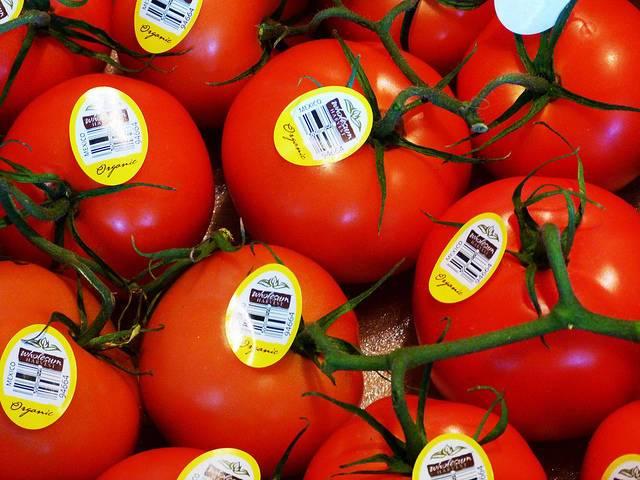

By Emily Folk
Organic foods typically have a pristine reputation, especially when compared to their traditionally farmed counterparts. But many of the reasons organic products get heralded as being healthier, safer and all-around better are not necessarily grounded in facts — they’re misconceptions about the farming process through which organic foods are cultivated.
As of 2016, the organic produce industry alone raked in more than $65 billion, so it’s clear the farming method is here to stay and extremely popular among buyers. It’s only right to debunk any myths still associated with the way this type of produce is harvested. Here are five of the biggest misconceptions — and the truth about each one.
1. Organic equals healthy.
Because organic foods are produced without manufactured chemicals or any genetic modification, many people believe they’re packed with more nutrients and flavor than those that are produced with conventional methods — in fact, 33 percent of Americans buy organic because they believe it’s better for their health. However, much research has shown this is just a misconception regarding organic foods.
When it comes to the makeup of organic versus non-organic produce, little differs in terms of a plant’s vitamin and mineral content. The only difference a 2008 study found was that traditional crops had higher levels of nitrogen, while organic ones were more acidic and contained more phosphorous. But these differing numbers have little effect on the overall benefit of biting into a fresh piece of produce — it’s good for you either way.
As for taste, those who regularly buy organic products will say they taste fresher or more flavorful, but blind taste tests do not back up these claims.
2. Organic means no pesticides.
We mentioned people think organics are healthier because they do not contain manufactured chemicals. However, organic products can, indeed, be produced with the use of pesticides and fungicides — they just have to be organic ones.
Even something as simple as spraying a pesticide in your yard to prevent mosquitoes and ticks should be done by a professional because of the danger it can cause to animals, plants and the earth as a whole. Imagine what type of effect farming has on the earth, then, when acres full of land are covered in poisons that wash away and enter the water supply.
And, even worse, many organic farms require more of the organic compounds used to keep pests at bay. So, using organics not only means you still bring pesticides into your home, but it can mean your preferences require using even more chemicals.
3. Organic products are too expensive.
On the other side of the fence are those who are anti-organic. One of the main reasons people dislike organic produce is that it’s much more expensive than conventionally farmed options. In some stores, this may very well be the case: After all, retailers put a premium on products they know conscientious customers will buy.
But this is not true in every case. At some stores and markets, you can buy organics for the same price — or even cheaper — than you would non-organic products. Try finding places where you can buy directly from farmers, such as local markets or even roadside stands. You can even sign up for a community-supported agriculture subscription service, where local farmers send a seasonal selection of organic products each month for you to experiment with in the kitchen.
4. Buying organic means all or nothing.
Some people believe you can’t just dip your toe into the organic pool: You have to buy everything organic to reap the full the benefits, or you might as well stick to conventionally farmed products.
There’s no clear answer as to whether organic or tried-and-true farming methods will serve us better in the long run, so choosing one method outright would be a mistake. The same goes for your weekly shopping trip, where you have to decide between organic and traditional products at the store. Some products are simply less affected by the fact that they’re organic, which means either choice has the same price, effect on the earth, etc.
There are some foods experts say you should always buy organic if you have access to them. They’re notorious for requiring more heavy-duty pesticides to grow, which makes them more concerning than run-of-the-mill crops, which require a light dusting of manmade or natural chemicals.
5. It's up to Someone Else to Tell You What's Right
Our final myth is that you have to listen to “expert” advice to make the choice of what organic products to buy. But if you’ve learned one takeaway from this article, it should be that expert advice can vary widely. Ultimately, it’s up to you to decide whether you want to eat organic products or not. Doing your research and balancing your budget will often help you make that choice easier, but it’s down to you to figure out what’s best for your kitchen, your meals and your body.
The good news is, you’re on the right track by incorporating fresh fruits and veggies into your day-to-day diet. Eating organic foods is a secondary concern to making sure you’re eating well. By looking this far into it, chances are, you’re on the right track.
Emily Folk is a freelance writer in the sustainability field and covers green technology, sustainability and conservation on her blog, Conservation Folks. You can also see her latest updates via Twitter.
Is ExxonMobil Finally Standing Up For Climate Science, Or Just Showing Up Coal?


After years of delay and obfuscation, ExxonMobil is finally showing signs of giving up its fight against climate science. In the latest development, last week ExxonMobil threw a monkey wrench into ALEC's plans for lobbying the Trump administration to relax global warming emissions. ALEC, the American Legislative Exchange Council, is an influential conservative lobbying group known for writing model legislation for state legislators to duplicate.
In an interesting twist, ExxonMobil is an ALEC member, and the company holds a seat on the ALEC task force that spearheaded the global warming effort. However, the disagreement over climate change doesn't necessarily mean it's splitsville for ExxonMobil and ALEC.
ExxonMobil and climate science
For those of you new to the topic, ExxonMobil has a decades-long track record of supporting efforts to undermine climate science. Criticism of the company's stance on climate change reached a boiling point in 2015, when news reports indicated that ExxonMobil was sitting on its own research confirming the link between human activity, greenhouse gas emissions and climate change, as early as the 1970s.
Among other problems, the failure to disclose that information opened ExxonMobil up to charges that it deliberately mislead investors on risks.
A peer-reviewed Harvard study published last summer also concluded that "ExxonMobil misled non-scientific audiences about climate science."
What's all this about ALEC?
Up to this point, ALEC has been ExxonMobil's steadfast ally in the fight against climate science.
ExxonMobil has stood by ALEC in recent years, even after a significant number of other high profile members defected over the organization's extremist positions on "stand your ground" gun rights laws and its pushback against climate science, among other issues.
ALEC saw a wave of defections in 2012 including McDonald’s Kraft, Pepsi, Coca-Cola, Intuit and Amazon. By 2014 the organization PR Watch counted 80 companies leaving ALEC. The list swelled to more than 100 in 2016.
ALEC pushes to relax climate regulations, ExxonMobil pushes back, ALEC backs off
The rift between ExxonMobil and ALEC began showing last month, when Bloomberg reported that ALEC was joining forces with the coal company Peabody Energy Corp. to "prod" EPA into rolling back its 2009 endangerment finding. In that finding, EPA affirmed that "greenhousegases in the atmosphere endanger both the public health and the environment."
As part of the rollback effort, ALEC's Task Torce on Energy, Environment and Agriculture recently drafted a resolution on climate change that calls for a reconsideration of the 2009 endangerment finding. The ALEC resolution questions the overwhelming consensus among climate scientists. Here's a snippet from the draft:
...research has shown that recent changes in temperatures, sea level rise, and the frequency and intensity of extreme weather events are not unusual in the historic and geophysical record...
Despite its history of fostering climate science denial, ExxonMobil seems to have drawn a line at the ALEC proposal. Earlier this week The Hill reported that ExxonMobil planned to vote against the ALEC climate resolution.
The Hill cited a letter from ExxonMobil to its fellow members on the ALEC task force, in which the company appeared to accept the scientific consensus on climate change:
“...we are concerned by the language of the resolution, especially relating to climate science, and do not support the resolution,” Kenneth Freeman, ExxonMobil’s manager of United States government relations, wrote in the Monday letter...
Apparently ALEC caved to the pressure. A vote on the resolution was scheduled for last Thursday, but the resolution was withdrawn "for now" before the final vote took place.
...but whither ExxonMobil?
Other big players in the petroleum and natural gas markets -- Royal Dutch Shell and BP -- have already quit ALEC. The organization can ill afford another defection from the fossil fuel sector.
However, If ALEC wants to keep ExxonMobil on its membership roll, it might want to communicate its desires with The Heartland Institute.
Heartland has long been instrumental in creating and amplifying anti-science messaging about climate change. In a press release last Thursday the organization took credit for drafting the ALEC resolution:
...the sponsor of the resolution, Rep. John Piscopo (R-CT), along with Bette Grande, a research fellow for The Heartland Institute who helped draft the resolution, withdrew it for now, saying “the final decision on this issue will be made by the Trump Administration.”
In the same press release, Heartland excoriated ExxonMobil for its role in quashing the resolution. The release encouraged media to share the following quote from Heartland President Tim Huelskamp (yes, that Tim Huelskamp):
“This result is disappointing, but not surprising. Big corporations like ExxonMobil and trade groups like EEI have long been members of the discredited and anti-energy global warming movement. They’ve put their profits and ‘green’ virtue signaling above sound science and the interests of their customers.
Wait, what? Since when did ExxonMobil become a warrior in the fight against global warming?
ExxonMobil shows up against coal
If you look at ExxonMobil's role in the shale gas boom, and then look at the role that cheap natural gas has played in driving coal power plants out of business, the company's stand on global warming takes on a definite green hue -- as in greenbacks, that is.
As long as ExxonMobil can tout natural gas as "cleaner" than coal, it has a clear interest in helping climate advocates keep the 2009 endangerment finding intact.
That's nice, but it doesn't let ExxonMobil off the carbon emissions hook. Natural gas is cleaner than coal as far as power plant emissions go, but there are global and local environmental issues all along the supply chain that add up to a hot mess of unsustainability.
Add the company's growing interest in petrochemicals, and it's not so clear that ExxonMobil is the climate warrior that Heartland makes it out to be.
One thing that does emerge from the Huelskamp statement: Heartland has just done ExxonMobil a huge public relations favor. A dis from Heartland is a badge of honor for climate activists, and the Huelskamp statement puts ExxonMobil squarely in that camp.
Whether that favor was intentional or not remains to be seen. There is a more simple explanation. Perhaps the funding stream from ExxonMobil to Heartland really has dried up, and the organization has nothing to lose by putting all its eggs in the coal basket.
As for ALEC, just last year ExxonMobil was listed as a top sponsor at the organization's 2016 annual meeting. For that matter, coal giant Peabody Energy is also an ALEC member -- and a member of that same Energy, Environment and Agriculture task force.
The relatively minor dustup over the ALEC resolution could be just the beginning of an epic pie fight between Peabody and ExxonMobil, two companies that not too long ago were firmly allied against climate science.
Stay tuned.
Photo: ExxonMobil refinery, Baytown, Texas 2012 by Roy Luck/flickr.
New Microsoft Silicon Valley Campus Long on Water Conservation, Short on Transport Options

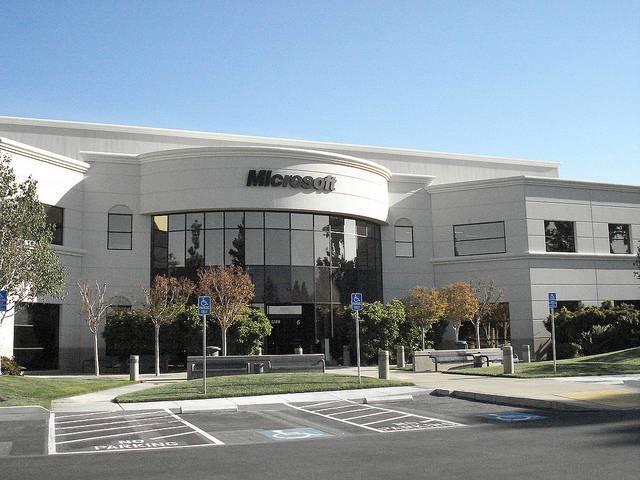
In 2019, Microsoft will reopen its newly modernized Silicon Valley campus in Mountain View in a drive to keep technology workers excited about working within one of the most expensive and congested areas in the U.S.
By most accounts, the complex off of Highway 101 and Shoreline Boulevard, comprising almost 15 acres, will be an impressive project. An integrated water management system will only use municipal water sources for sinks and water fountains. Any water used for irrigation, plumbing and sewage systems will be collected and treated from an onsite water treatment plant. Rainwater, storm water, wastewater and grey water will be collected from just about anywhere, from roofs to kitchens to even runoff from paved areas.
The technology giant claims that the complex’s green building street cred will be further boosted by ample solar power, a four-acre green living roof and other design aspects that will allow the entire project to be certified as LEED Platinum upon completion.
Investment in the revamped Mountain View campus will progress as Microsoft is upgrading and purchasing property across the west coast. The company is still in growth mode, even if its accomplishments are often overshadowed by the likes of Google, Apple and Facebook. Microsoft is projected to generate almost $90 billion in revenues this year and is still primed to do whatever it takes to attract talent.
In September, the company reportedly purchased land in north San Jose in what has been described as a move to expand its scope of cloud computing and internet technologies. Its Redmond, WA campus is undergoing a huge makeover; one perk will be a cricket pitch in a bid for employees with ties to the Indian subcontinent, West Indies and South Africa feel at home. In recent years, as covered here on TriplePundit, the company has proven to be a force for both environment sustainability and social good.
The problem with Microsoft’s refurbished Mountain View complex, however, is that its public transportation and walkability are lacking. This is not necessarily the fault of Microsoft; many Bay Area communities have repeatedly resisted public transit options until traffic became intolerable and infrastructure development options dissipated due to the cost of land. Plans to expand systems such as BART and Santa Clara County’s light rail have often been delayed while the systems remain stubbornly expensive to maintain.
The continued angst over traffic gridlock and the Bay Area’s housing crisis has forced many technology companies to do what they can to solve what many say are the two most pressing problems in Silicon Valley. As sustainable as this project may appear, however, this complex does not do anything to take on either of those challenges. No mention of affordable housing has been tied to this complex’ redevelopment plan. And the closest rail option to Microsoft’s Silicon Valley campus is the Mountain Caltrain station, which is approximately 2.5 miles away. Most employees will have to rely on Highway 101, with no plans to relieve the artery’s notorious congestion in sight.
Image credit: Kestel Multimedia
6 Careers for Renewable Energy Enthusiasts

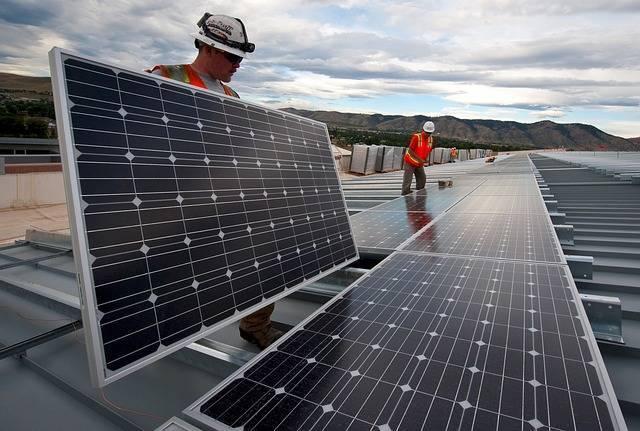
By Sarah Davies
Renewable energy isn’t the future – it’s right now. Every day, people around the world are making a sincere effort to reduce their dependency on energy sources that are harming the environment. It’s become more affordable to make the switch, and the average homeowner or business leader is always looking for ways to make the world a little greener. If you share the passion, you’ll easily be able to turn that passion into a career.
1. Contractor / Electrician
Becoming a contractor is one of the easiest ways to get involved in green energy. People need their solar panels installed, and someone has to come out and do the job. You can also provide complementary services, like better insulation or special windows that keep heating and cooling needs to a minimum. As a contractor, you can meet the needs for both renewable energy and energy efficiency.
Now that people are switching energy sources, someone needs to be able to equip buildings to fully utilize them. Solar and wind energy won’t work well with old wiring. These energy sources need specialty electricians to install the new pathways to power these homes and businesses.
2. Green Engineering
Green engineering is a broad field. These engineers help design things like wind turbines and solar panels that are budget friendly and highly efficient. They can work in any sector where things need to be built and powered. Almost every industry, from farming to manufacturing to commercial development to real estate will benefit from the help of a green engineer.
Environmental engineering includes engineers who use chemistry, biology, and soil science together with principles of engineering to develop solutions that address environmental problems. Not all environmental engineers have degrees in this area – in fact, many job postings include geotechnical or civil engineering degrees as prerequisites.
An interesting area of environmental engineering is biofuel engineering. Biofuels are expected to change our lives dramatically when they become widespread and start fueling our cars and jets, or heating our homes. Biofuel engineers perform jobs that are focused on upgrading processes and equipment required for dealing with biofuels.
3. Sustainable Farming
Many industries rely on biofuels to fill energy gaps. Biofuels are often derived from things like corn, soybeans, and even sugarcane byproducts. Even manure can be used to create biofuel. Farmers have a very important job in helping the environment. Some of the most interesting career lines in sustainable agriculture include agronomy (with a focus on scientific methods for the production of field crops), soil science, horticulture, animal science, and organic farming. In fact, organic farming practices that maintain soil productivity and protect the environment are highly sought-after today and specialists who know how to limit the use synthetic fertilizers and pesticides – usually in possession of a degree in environmental or agricultural science – can find various employment opportunistic.
Another interesting area is green biotechnology. Biotechnology refers to the industrial use of living organisms (or parts of living organisms) to produce foods, drugs, or other products. Green biotechnology (also called plant biotechnology) is a rapidly expanding field that aims to improve the production and output of crops thanks to eco-friendly alternatives (bio fuels, bio fertilizers and bio pesticides).
4. Environmental Consultant
Being an environmental consultant applies to more than just renewable energy – it affects all aspects of a company’s efforts to become environmentally friendly. Organizations trying to reduce their environmental impact will hire consultants to measure what they’re doing and find ways to reduce damage they may be doing. You can help convert dirty businesses into clean ones.
An environmental consultant usually works on a contractual basis for private and public sector clients, addressing issues such as water pollution, air quality, and soil contamination. An environmental consultant has the scientific knowledge and technical expertise to conduct field and desk-based research, carry out environmental assessments, and advise companies on a variety of matters. For example, if a company considers buying a piece of land for development, the consultant can assess the land before the purchase and collect relevant data to research that particular site further.
5. Mechanic
Renewable energy is having a significant impact on the automotive industry. Cars that are highly efficient on fuel are built completely differently from the cars of generations past. Even larger delivery vehicles are being improved for efficiency. As electric vehicles become more widespread, you can be sure that the demand for professionals who know how to maintain and repair such cars will rise as well. While much of the routine maintenance and repair work can be carried out by regular repair workers, electrical systems and drivetrain require skilled workers who are familiar with electric vehicles. Moreover, repairing or installing electric vehicle batteries are tasks that require training as well.
6. Architecture and Design
The advent of solar and wind energy has changed the way we approach the design of new buildings and structures. With Elon Musk’s passion project of developing the solar roof beginning to shake up the way developers are approaching the design process, it’s an exciting time to get onboard. Architects and designers of all sorts are going to need to adapt.
There are plenty career choices in green design: architects, landscapers and urban planners are all part of a growing professional force that aims to make the spaces where we live and work more environmentally-friendly.
Having experience in business administration and communications, Sarah Davies currently works at Open Colleges, Australia’s leading online educator. She loves sharing her tips and suggestions about topics pertaining to careers and business. Feel free to find her at @sarah_davies_au.
Image credit: Pixabay / skeeze
Opportunity Index Offers Micro View of Quality of Life Across the U.S.
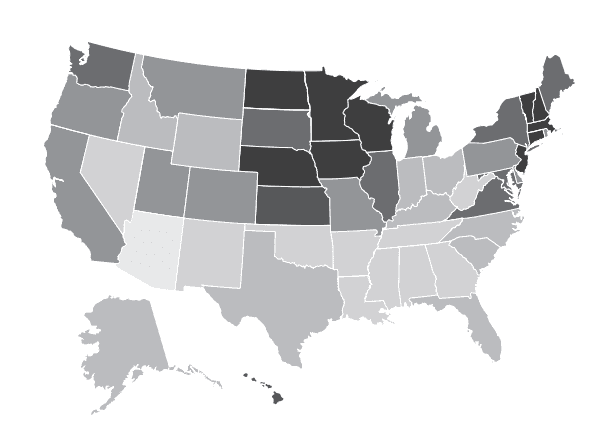

Over the years numerous studies have shown where the U.S. ranks on quality of life issues compared to other industrialized countries, and usually do so in an unflattering light. The news is usually discouraging on a wide range of issues, from health care to academic achievement to the infant mortality rate.
But a closer look at the country of 323 million offers a clearer picture at how well U.S. citizens fare at a local level. To that end, the most recent Opportunity Index evaluates all 50 states and the District of Columbia, and then drills down to almost 2,100 U.S. counties. Going beyond economics, the survey also includes indicators related to health, education and community. Opportunity Nation, the NGO leading this study, was joined in this effort by PwC and the nonprofit research organization Child Trends.
The country’s overall score is 52.4 out of 100 – a number that may appear jarring at first, but a more discerning look reveals improvements on a wide range of challenges, from the ability to secure health insurance to improved high school graduation rates. The problem, however, is that overall, the Opportunity Index concludes that opportunity is often segregated by race and ethnicity: Half of the counties with lower levels of opportunity are where people of color comprise the majority. Furthermore, no county with a population over 20 Native American or Alaska Native had a score higher than a “C.”
The good news is that across a macro level, life is improving for many citizens since the first Opportunity Index launched in 2011. More people are working, the country’s median household income is increasing and violent crime continues to decline. This year, 43 statewide opportunity scores saw improvement, while only seven states witnessed a decline. The results are also encouraging for residents of New England and the upper Midwest, as the index's top five ranked states are Vermont, Minnesota, Iowa, Massachusetts and North Dakota.
And in another hopeful sign, several demographic trends have witnessed improvement. One that stands out is that for the first time since the Opportunity Index launched, the population of disconnected youth (citizens aged 16-24 who are neither working or enrolled in school), has declined to under 5 million. According to the survey’s researchers, that number is important as along with incarceration rates, youth disconnection has a high correlation to the lack of opportunities.
In turn, at the county level, a high percentage of citizens with an associate’s degree or higher is most associated with economic opportunity. Hence more good news: the rate of adults with some level of post-secondary education is up in every state. Other trends, however, suggest long-term concerns. One of them is that the rate of preschool enrollment has declined in over half of the U.S. states, while only 16 schools have seen a boost in that rate.
In addition, the survey reveals where additional work needs to be done. Access to banking, which can help integrate citizens into local economies, has declined in almost every state and has improved in none. Voter registration rates have fallen in 37 states and the District of Columbia. And deaths from drug or alcohol poisoning, as well as those from suicide, have increased in 43 states.
Improvements across U.S. counties suggest a hopeful future, as almost 400 of them showed a large increase from 2016 to 2017 in what the survey calls their “opportunity grades.” Yet the Opportunity Index also helps explains the angst that lies behind the result of last year’s presidential election. For the 54 counties that saw a significant decrease in their scores, two-thirds are in the U.S. South; and the vast majority of them are rural counties with a population of 100,000 or less. Too many people are being left behind, and a large number of them of them are clustered where public health, educational opportunities and job creating are stalled.
Image credit: Opportunity Index
ExxonMobil Fights State Access to Climate Change Research


ExxonMobil wants justices on Massachusetts' highest court to block an investigation by the state attorney's office into Exxon's corporate records. Its reason seems spurious. Corporate lawyers argue a state should not be able to seek material that addresses whether the company misled the public.
In a statement last Tuesday to the Massachusetts Supreme Judicial Court, Exxon attorney Justin Anderson said their concern had nothing to do with speculations about whether Exxon knew decades ago that its operations would increase global warming.
“We are not asking this court to weigh in on the causes of climate change,” said Anderson.
Rather, Anderson said, ExxonMobil should only be "held to account here for what they’ve done here," meaning operations within the state itself.
Exxon merged with Mobil in 1998 to form ExxonMobil, but much of the research in question was pioneered by Exxon prior to the merger.
But apparently the attorney general's office doesn't see it that way. Attorney Richard Johnston, speaking on behalf of Attorney General Maura Healey, stated that the corporation was actually responsible for the marketing and advertising operations of Exxon gas stations in the state, and therefore had direct say in controlling the environmental impact of its franchized businesses.
According to Johnston, ExxonMobil wants the courts to “essentially suspend common sense and your own cognizance of what is going on in this commonwealth,” and that it has responsibility and “consistently [does] business here in Massachusetts.
"We should be able to find out whether they knew about impact of fossil fuels on global warming so they should have said more in those advertisements,” Johnston said.
According to the Boston Herald, Healey's investigation was already approved by the state's lower court after the attorney general's office proved that the corporation's branding was on more than 300 service stations across the state, and that its head office in Irving, Texas, actually has direct say into the promotional sale of that product. In January, Superior Court Judge Heidi Brieger ruled that ExxonMobil was required to turn over the requested documents.
The gas pump said Johnston, is among "the premier contributors to global warming."
The company, on the other hand, feels Healey, the Attorney General, showed bias against the company in earlier press events. It is suing Healey, whose investigation delves directly into the company's environmental investigations and the conclusions it came to long before climate change was linked in part, to emissions from carbon-based industries.
But the state of Massachusetts isn't the only government that is probing whether ExxonMobil misled stakeholders over the years about the potential link between its products and climate change. New York State Attorney Eric Schneiderman said in June that he was in possession of “potential materially false and misleading statements by Exxon” that suggest it misled investors about its operations and its impact on the climate. ExxonMobil has also heard from its shareholders in more recent years, who have said they want climate change risks clarified and addressed.
The U.S. Securities Exchange Commission is also investigating how the company values its stock in light of carbon emissions and the sustainability projections for the industry.
As of the time of the SEC's investigation last year, ExxonMobil remained the only oil and gas provider to have not adjusted its valuations in line with falling oil prices. In February, it announced to its shareholders and the SEC that it was cutting the number of recoverable reserves, acknowledging that some investments in the oil sands sector appeared to be unrecoverable due to cost.
Flickr image: Mike Mozart
CEOs Showed Backbone in 2017; How More Can Step up Next Year
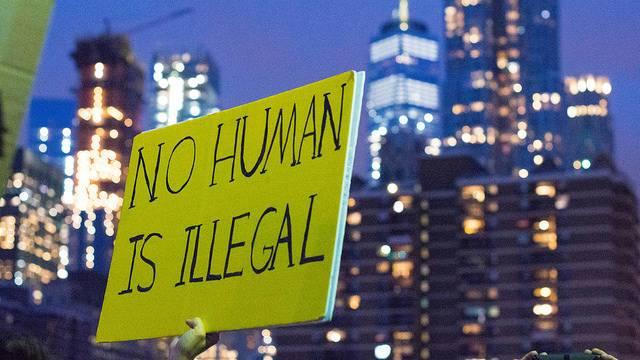

By Michael Eberhart
In all the chaos of 2017, one profoundly positive outcome was CEOs finding – and using – their moral voices. In January, CEOs from Google, American Airlines, Starbucks and others spoke out against the administration’s travel ban targeting Muslim refugees. In June, Elon Musk and others quit the president’s business advisory council over objections to Trump’s withdrawal from the Paris climate agreement. And in August, when the president said the violent white supremacists in Charlottesville included “very fine people,” the advisory council itself was disbanded after remaining business leaders walked out in protest.
Over and over – from the proposed ban on transgender military services members to the proposal to end DACA protections for America’s DREAMers – CEO activism made 2017 a year when business leaders moved out of their comfort zones to take public stands for causes they believe in and issues they care about.
This is not new for some in the responsible business community. Many have long been fierce and vocal leaders in their communities, publicly confronting forces destructive to people and the planet. Others have remained silent in the past, but now a combination of personal outrage, mission and brand alignment, and pressure from employees and customers has created a new opportunity for every CEO and business owner to engage.
Have you seen things happening that cannot go unchallenged? Do you feel the need to speak out? You know you would be letting your team down if you didn’t. But you also know that it can be risky to step into the political fray – blowback can hurt sales, distractions can derail your business’s priorities, and disruptions can have long-term effects.
How do you make your voice heard on controversial issues with integrity, in a way that is understood by your staff, your customers and your investors – regardless of their political stance? What do you need to take on, and what should you leave for others?
To help answer these questions, the American Sustainable Business Council, working with Conscious Company, created an advocacy guide for responsible business leaders about best practices to influence policymakers. The guide, “Step Up, Speak Out, Impact Policy,” shows business leaders from small business owners to CEOs how they can make their voices heard by lawmakers and the media on these important issues.
Business leaders are one of the most effective messengers able to cut across party lines. Politicians at every level of government respect their role in creating jobs, and they rely on business leaders understanding of the economy and what businesses need to thrive. But all too often, lawmakers only hear from the entrenched business lobbies offering a short-sighted perspective. Instead, they need to hear from leaders who share the triple-bottom-line values of responsible, innovative companies.
Business people have unique influence in their communities, in the media and with policymakers. ASBC has helped many CEOs and business owners step up and speak out. ASBC’s guide explains why they do it, and what they learned in the process. All business leader can leverage their power as a force for good well beyond their subtle influence over employees and customers. For business leaders who feel moral outrage, the examples have been set, and the tools are available. Find out more by getting your own copy of the advocacy guide for responsible business leaders.
Michael Eberhart is a Public Relations Intern at the American Sustainable Business Council.
Green Leasing: The Commercial Landlord’s Way to Save Cash and Energy


By Jenna Cyprus
Sustainability has officially worked its way into the formula for commercial real estate appreciation. Sustainability in commercial real estate has transformed landlord-tenant relationships across the world. This organized effort has been dubbed green leasing.
If you own commercial property, adopting a green lease structure can make your property more desirable attract responsible tenants who understand that saving energy affects their bottom line.
Traditional leases don’t encourage saving energy
With most net and modified gross leases, the building owner is responsible for all capital upgrades. Neither the tenant nor the landlord has an incentive to save energy. The landlord doesn’t have a reason to invest in costly energy-saving systems because operating costs are passed to the tenant. Any reduction in energy usage benefits only the tenant.
At the same time, the tenant doesn’t have an incentive to save energy because in a shared space without a separate meter, they’re charged a portion of the entire energy bill, based on their square footage. Unless everyone in the building is also consciously saving energy, their efforts won’t make a dent in their bill.
Green leasing turns the frustrations of a traditional lease into a partnership between the landlord and tenant. It’s a groundbreaking concept that promotes energy efficiency through lease structures that “equitably align both costs and benefits of efficiency investments between building owners and tenants.”
Your tenants will put in the effort to save energy when they know their efforts are going to save them money. By creating this partnership-style lease, everyone benefits. Equitably aligning costs and benefits requires taking on a bit more responsibility than other landlords, but it saves everyone money and fosters a better overall landlord-tenant relationship.
Components of a green lease
Every green lease will be different based on the building’s improvements, design, construction, and certifications. Every green lease, however, should include clauses that require both parties to adhere to (and not violate) its sustainable building certifications (like the LEED certification). If your building has achieved a certification, violating that certification in any way can create big problems.
Your green lease should cover everything necessary for your building to maintain its certifications. For instance, the lease should detail the requirement of using an energy efficient HVAC system, having renewable energy sources, reusing stormwater, using motion sensors, and having low-flow plumbing fixtures. Your lease should also specify that any work performed by the tenant should conform to existing certifications and require contractors to recycle their construction waste.
For a detailed description of more energy-saving changes you can make, read this thorough energy saving guide. This guide describes how to apply for solar energy tax credits, and why you should hire an energy auditor. It also provides practical advice like installing a faucet aerator to increase water flow and reduce water consumption. The guide suggests incorporating clauses into the lease that requires the use of environmentally-friendly cleaning supplies, and maximum operating hours for the thermostat.
The guide also emphasizes the mutual benefit to a green lease: “Green leases can improve your relationship with your tenant. They are designed to have mutually beneficial provisions inside of them. They can make your tenant feel like he or she is working with you for a common goal not against you in lease negotiations or in an attempt to get repairs made.”
Green leases are successful – they’re saving money
The Institute for Market Transformation (IMT), along with the U.S. Department of Energy, recognizes landlords and tenants who maximize energy performance through green leasing.
Resistance to cost-sharing arrangements between a landlord and tenant is common. To break through this barrier, IMT recognizes businesses successfully utilizing a green lease through the Green Lease Leaders Program. This yearly award demonstrates existing success to those who are on the fence about green leases.
To be considered for the award, the entity must:
- Align with the EPA’s new ENERGY STAR for Tenants recognition program
- Implement green lease language in foundational corporate policies and lease forms
- Have green leases in action
Jenna Cyprus is a freelance writer from Renton, WA who is particularly interested in travel, nature, and parenting. Follow her on Twitter.
Image source: Pixabay / mastersenaiper